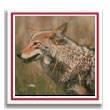|
The First Peoples of Canada have gone through many name
changes. The label that many still know the First Peoples by is
Indian. Indian was a name that was given by Christopher Columbus
when he arrived in the Caribbean in 1492 under the mistaken
assumption that he had landed on India. However, when subsequent
explorers realized that the Americas were not India, they had to
make sense of this new piece of land within the logic of the
day. The term Indian was born out of the belief that there was
no human inhabitation outside of the lands that had been
discovered prior to the time that Columbus set foot in the
Americas. The only other answer that could coincide with this
thought ideal was that this newly discovered area was the Garden
of Eden. According to mythology, the Garden of Eden is located
in the East and therefore, anybody east of the Indus River was
called Los Indios (Indians). This name has become entrenched in
the Indian Act of 1876 as the status-Indian.
When European traders and voyageurs began to consummate
relations with the First Peoples of the Americas, a new and
distinct people was born. These mixed blood people were called
half-breeds. The rationale was that the mixed blooded people
were only half human from their non-Aboriginal heritage. For
many years this term was used throughout popular discussion. In
fact, some mixed blood groups even tried to re-appropriate the
name by calling publications "The New Breed". During and after
the forming of Red River a new name began to appear with regard
to mixed bloods. Louis Riel, the leader of the Provisional
government adopted the name Métis to describe his fellow people.
Métis is a French word for mixed. It was originally used to
describe people who were of mixed heritage between the French
and the First Nations, but has come to be used for all groups of
mixed European and Aboriginal ancestry.
In the early 1980s, many socio-political changes were
occurring with the First Peoples of Canada. Prime Minister
Pierre Trudeau was in the process of creating a Constitution
that was distinctly Canadian. During this time period, tempers
were already stirring over the debacle of the 1969 White Paper
that Trudeau’s Liberal government tried to make law. The
lobbying power of the First Nations and the Métis increased.
First Peoples rallied behind the move to include the word
Aboriginal in the constitutional framework. The word Aboriginal
was eventually included in Section 35 of the Constitution, which
defines Aboriginal and then recognizes existing Aboriginal
rights. The Constitution defines Aboriginal as including
"Indian, Inuit, and Métis peoples of Canada."
Recognition of the First Peoples was not diminished in this
time period. In fact, many now refer to the First Peoples as
First Nations or Métis. First Nations are named so for the
theory that they were the first people on this continent
constituting the first nations. Referring to the people as
Nations is also a move to assert sovereignty. After gaining
recognition in the Constitution, the Métis were empowered to
form a distinct nationhood.
 As part of a global movement, the First Peoples of Canada,
including Métis and First Nations, are adopting the term
Indigenous. This term indicates that the First Peoples did not
merely arrive in this particular area, but they are from here.
They are native to this area. Similarly, the Métis are an
Indigenous population in that they are a Nation that was formed
in this area, even though the Métis have ancestry that is
non-Aboriginal. Through their identity as Indigenous people, the
Métis and the First Nations have joined in a relationship with
other Indigenous groups around the world including the Maori of
New Zealand, the Aborigines of Australia, and others.
As part of a global movement, the First Peoples of Canada,
including Métis and First Nations, are adopting the term
Indigenous. This term indicates that the First Peoples did not
merely arrive in this particular area, but they are from here.
They are native to this area. Similarly, the Métis are an
Indigenous population in that they are a Nation that was formed
in this area, even though the Métis have ancestry that is
non-Aboriginal. Through their identity as Indigenous people, the
Métis and the First Nations have joined in a relationship with
other Indigenous groups around the world including the Maori of
New Zealand, the Aborigines of Australia, and others.
Sources:
http://www.ainc-inac.gc.ca/pr/pub/wf/index_e.html
Josephy, Alvin M., America in 1492: the world of the Indian
peoples before the arrival of Columbus. New York: Random House,
1992.
|
 Heritage Community Foundation Presents
Heritage Community Foundation Presents




















